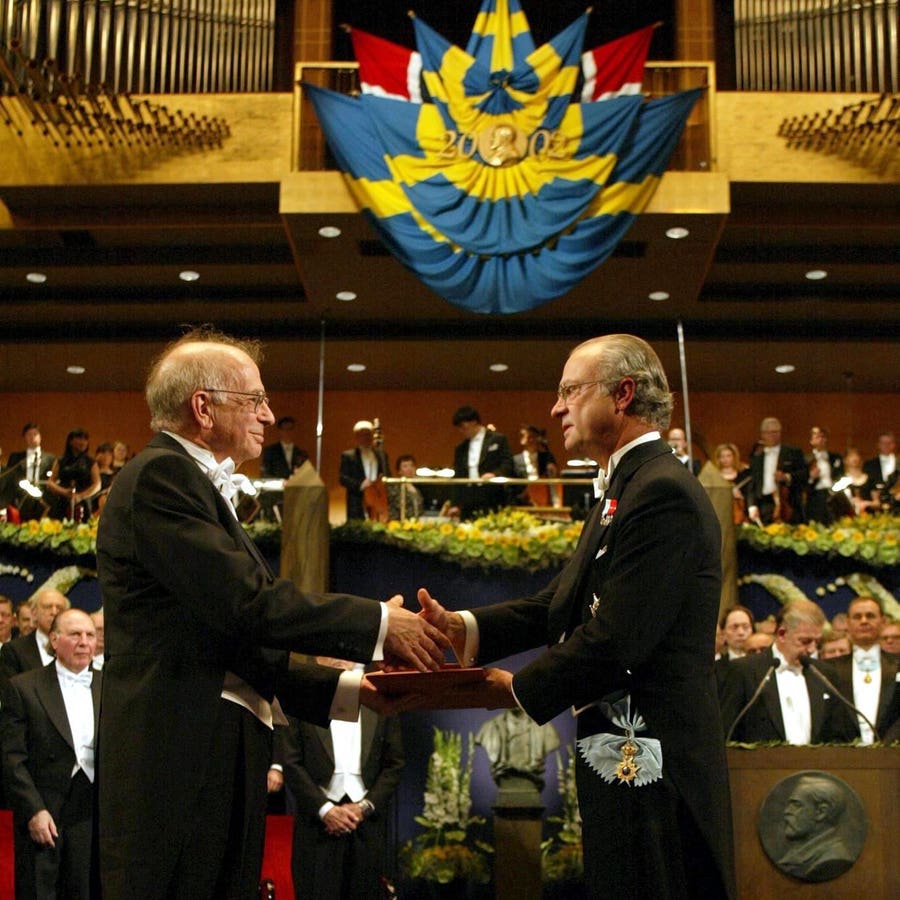A “Thinking, Fast and Slow” Step Toward Neuro-Symbolic AI
As bodies pressed against steel barriers, 97 people lost their lives in a crush of football fans. The 1989 Hillsborough disaster, Britain’s deadliest sports tragedy, sparked a rush to judgment: football hooligans, the scourge of English sports in the 1980s, were blamed. It took decades of legal battles to reveal that police mismanagement, not fan behavior, was the true cause.
This initial blame is what Nobel laureate Daniel Kahneman, in Thinking, Fast and Slow, called “System 1 (fast)” thinking, which is intuitive. “Intuition is thinking that you know without knowing why you know,” he wrote.
But the truth was revealed, thanks to families who demanded answers. Years of legal battles uncovered evidence of police mismanagement. This methodical analysis — Kahneman’s “System 2 (slow)” thinking — finally exonerated the fans.
The legal profession demands both swift intuition and careful reasoning. Lawyers frequently depend on quick judgments to assess cases, but detailed analysis is equally important, mirroring how thinking slow was vital in uncovering the truth at Hillsborough. Now, AI is evolving to emulate this duality, potentially reshaping legal work.
This is where neuro-symbolic AI comes into play — a hybrid approach that blends the strengths of neural networks (intuition) with the precision of symbolic AI (logic).
But what exactly is neuro-symbolic AI, and how does it differ from what we have now?
Neuro-Symbolic AI: Merging Intuition And Logic
Neural networks learn by analyzing patterns in vast amounts of data, like neurons in the human brain, underpinning AI systems we use daily, such as ChatGPT and Google Search.
This data-driven processing aligns with Kahneman’s “thinking fast” — rapid, intuitive thinking. While neural networks excel at finding patterns and making quick decisions, they can sometimes lead to errors, referred to as “hallucinations” in the AI world, due to biases or insufficient data.
In contrast to the intuitive, pattern-based approach of neural networks, symbolic AI operates on logic and rules (“thinking slow”). This deliberate, methodical processing is essential in domains demanding strict adherence to predefined rules and procedures, much like the careful analysis needed to uncover the truth at Hillsborough.
IBM’s Watson exemplifies this, famously defeating chess grandmasters Garry Kasparov and Vladimir Kramnik. Chess, with its intricate rules and vast possible moves, necessitates a strategic, logic-driven approach — precisely the strength of symbolic AI.
Similarly, tax preparation software like TurboTax and H&R Block rely heavily on symbolic AI to navigate the intricate web of legal regulations and ensure accurate calculations. This meticulous, rule-based approach ensures each step is executed according to established guidelines.
Chain-Of-Thought Prompting: How o1-preview Mimics Human Reasoning
OpenAI’s o1 model is not technically neuro-symbolic AI but rather a neural network designed to “think” longer before responding. It uses “chain-of-thought” prompting to break down problems into steps, much like a human would. While it may appear to think, o1 is not conscious or sentient. It’s executing complex algorithms to produce this human-like reasoning, resulting in stronger problem-solving abilities.
According to OpenAI, o1 “performs similarly to PhD students on challenging benchmark tasks in physics, chemistry and biology.” In a mock qualifying exam for the International Mathematics Olympiad, o1 correctly solved 83% of the problems — a dramatic improvement over GPT-4’s 13% success rate.
OpenAI’s o1 not only demonstrates advanced reasoning but also hints at the future potential of artificial general intelligence. AGI refers to AI systems that can understand, learn and apply intelligence broadly, much like humans.
Additionally, o1 showcases elements of agentic AI, where systems can act independently to achieve goals. This means that instead of just responding to prompts, AI agents can set objectives, plan steps and act to achieve them.
By breaking down problems systematically, o1 mimics human thought processes, considering strategies and recognizing mistakes. This ultimately leads to a more sophisticated ability to analyze information and solve complex problems.
In essence, o1 learns to reason by example, one step at a time. It serves as a bridge between Kahneman’s concepts of thinking fast and thinking slow, aiming to deliver better reasoning with fewer mistakes. This approach paves the way for more advanced systems like AlphaGeometry that truly merge neural and symbolic approaches.
DeepMind’s Neuro-Symbolic Leap To Deductive Reasoning
While OpenAI has garnered widespread attention with its new hybrid AI system, Google DeepMind is also making significant strides in this field with AlphaGeometry, announced in early 2024 in Nature.
In tests, AlphaGeometry solved 83% of International Mathematical Olympiad geometry problems, matching o1’s performance and nearly reaching that of human gold medalists.
Unlike o1, which is a neural network employing extended reasoning, AlphaGeometry combines a neural network with a symbolic reasoning engine, creating a true neuro-symbolic model. Its application may be more specialized, but this approach represents a critical step toward AI models that can reason and think more like humans, capable of both intuition and deliberate analysis.
From Geometry To Justice: Neuro-Symbolic AI’s Next Frontier
AlphaGeometry’s success underscores the broader potential of neuro-symbolic AI, extending its reach beyond the realm of mathematics into domains demanding intricate logic and reasoning, such as law. Just as lawyers meticulously uncovered the truth at Hillsborough, neuro-symbolic AI can bring both rapid intuition and careful deliberation to legal tasks.
This innovative approach, merging the precision of symbolic AI with the adaptability of neural networks, offers a compelling solution to the limitations of existing legal AI tools.
Contract analysis today is a tedious process fraught with the possibility of human error. Lawyers must painstakingly dissect agreements, identify conflicts and suggest optimizations — a time-consuming task that can lead to oversights. Neuro-symbolic AI could addresses this challenge by meticulously analyzing contracts, actively identifying conflicts and proposing optimizations.
By comprehending the logical interdependencies within agreements, it proposes structures that seamlessly align with both legal requirements and business objectives.
In the realm of legal precedent analysis, it could grasp underlying legal principles, make nuanced interpretations and more accurately predict outcomes. The result would be a more context-aware and logically coherent evaluation, enhancing the quality of legal decision-making.
The Human Element In The Age Of AI: Thinking, Fast And Slow
As AI technologies automate legal research and analysis, it’s easy to succumb to rapid judgments (thinking fast) — assuming the legal profession will be reshaped beyond recognition. However, as Kahneman suggests, “Nothing in life is as important as you think it is while you are thinking about it.” Taking a moment for deliberate reflection, we might realize that perhaps the transformation isn’t as earth-shattering as it seems — or perhaps it is.
Either way, a measured approach is wise. It will undoubtedly become crucial for lawyers to master AI tools, but these tools are most effective when wielded by those with uniquely human strengths.
This caution is echoed by John J. Hopfield and Geoffrey E. Hinton, pioneers in neural networks and recipients of the 2024 Nobel Prize in Physics for their contributions to AI.
Dr. Hinton, often called the “godfather of AI,” warns that as AI systems begin to exceed human intellectual abilities, we face unprecedented challenges in controlling them. He compares the impact of AI to that of the Industrial Revolution, emphasizing the necessity for careful oversight.
Dr. Hopfield highlights that technological advancements like AI can bring both significant benefits and risks. Their insights underscore the importance of human judgment and ethical considerations, especially in critical fields like law, where the stakes are exceptionally high.
The future of law in the age of neuro-symbolic AI is full of possibilities. While we can’t predict exactly what it holds, one thing is certain: it will require both the sharp logic of machines and the nuanced understanding of humans.
After all, as former U.S. Supreme Court Justice Oliver Wendell Holmes Jr. observed over a century ago: “A good lawyer knows the law; a great lawyer knows the judge.”
This wisdom remains pertinent in the age of AI — unless, of course, the judge is a machine.
Read the full article here










